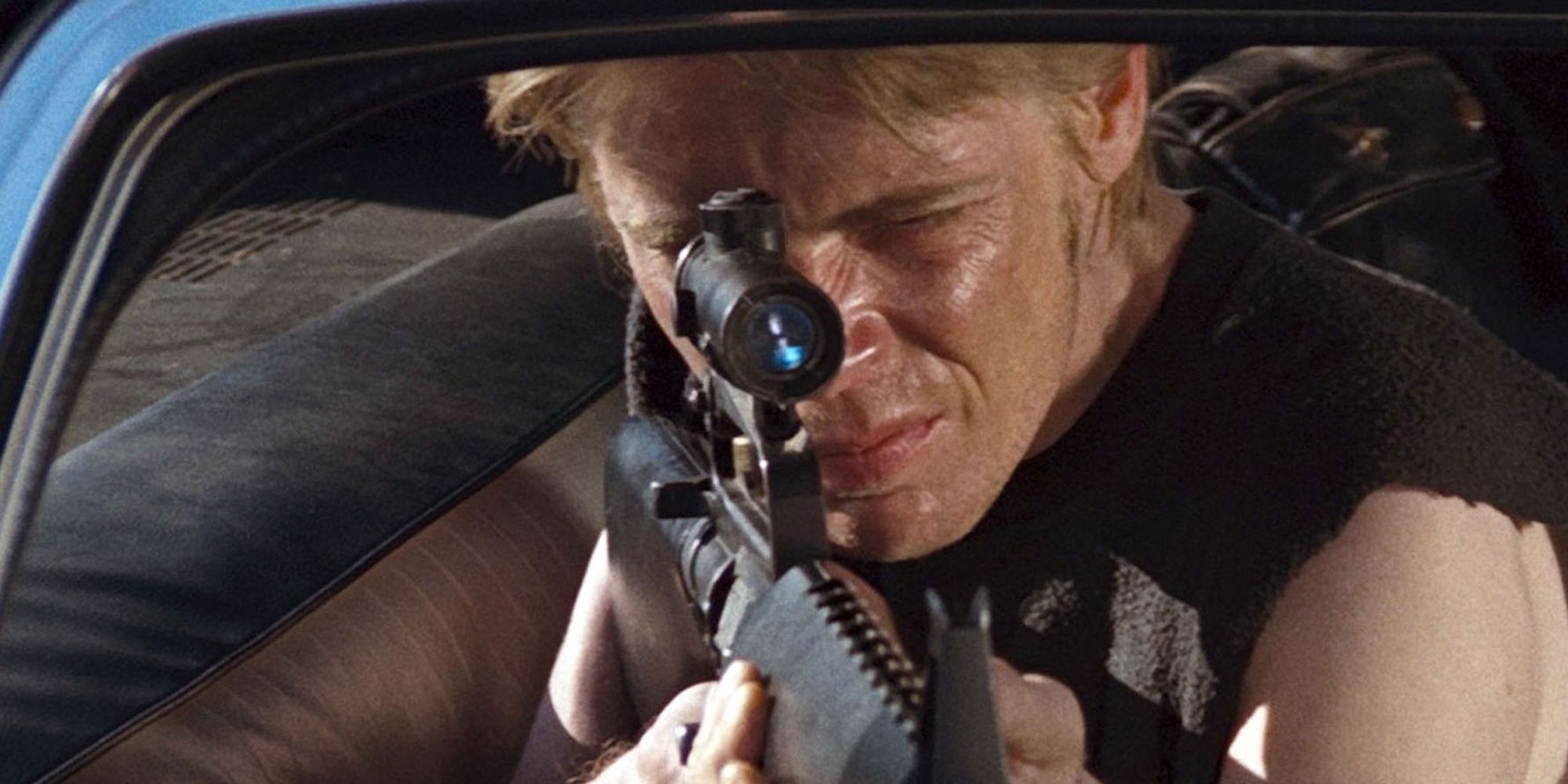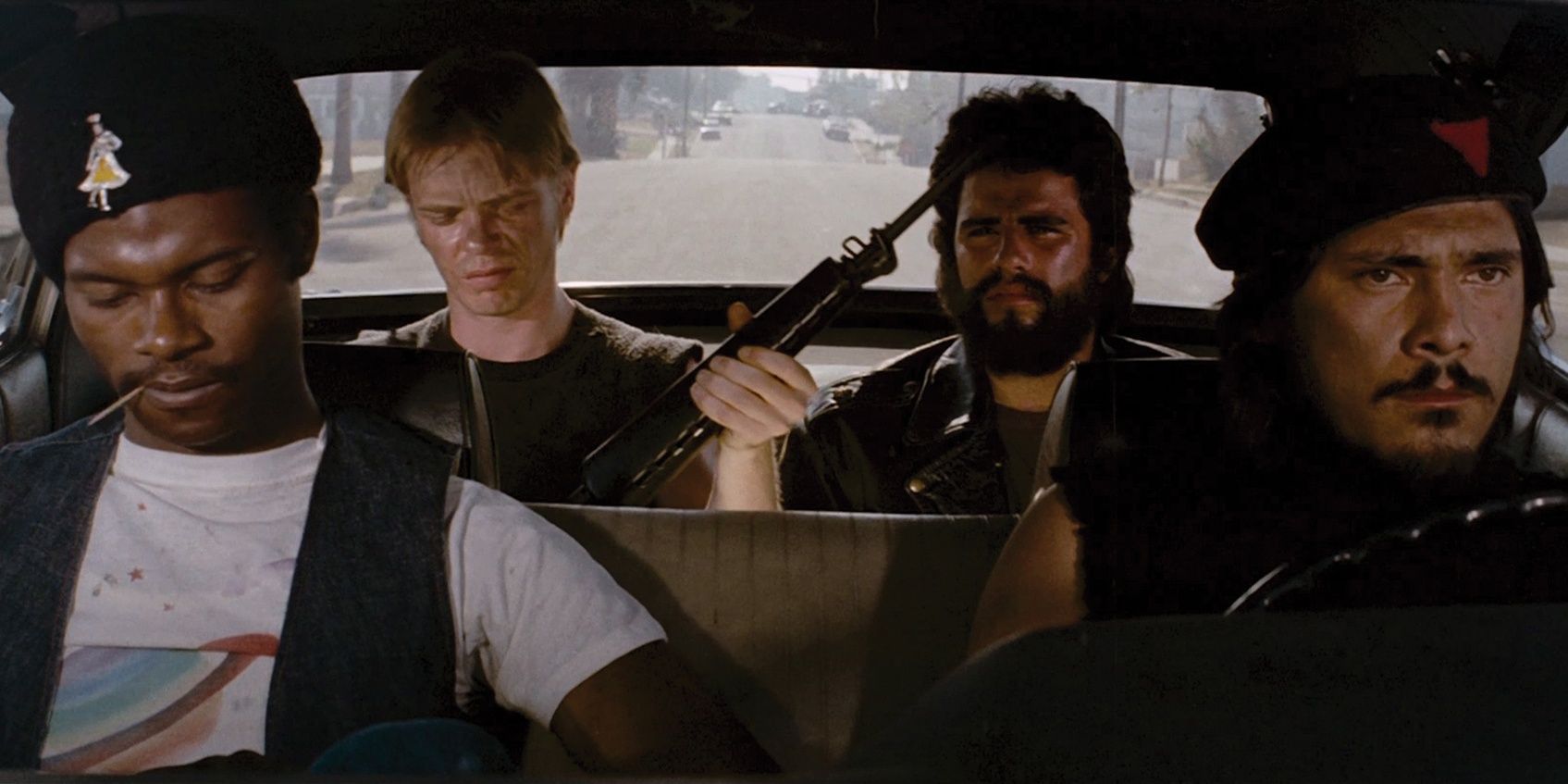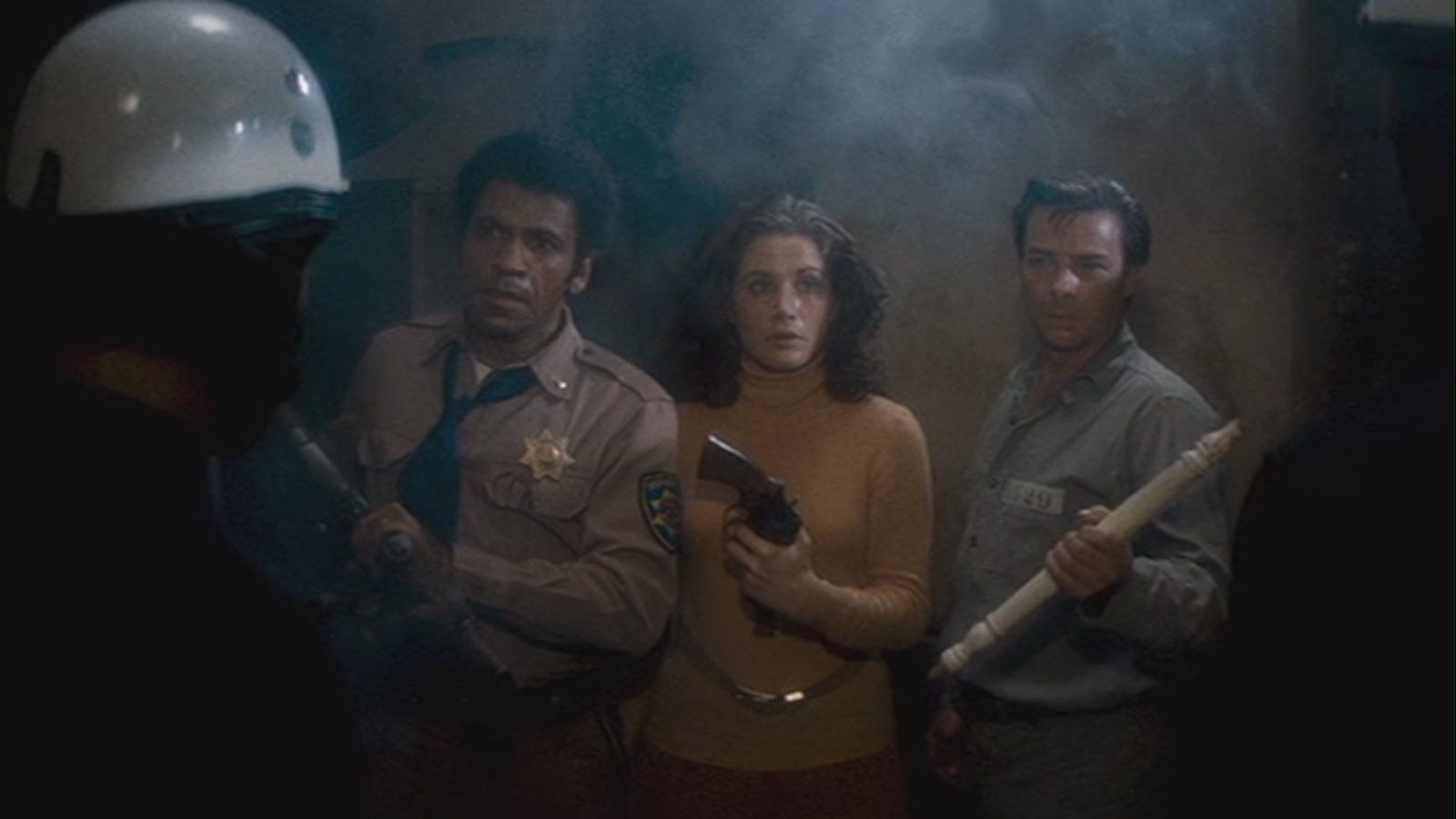[ad_1]
John Carpenter has always said that he would love to make a Western one day, but remember that time when he basically remade the classic film Rio Bravo? That’s right, in the early 1970s, John Carpenter took the logline and character archetypes of Howard Hawks’ film and placed them in ’70s Los Angeles, filled the frame with cops and criminals, and the result was Assault on Precinct 13. While Carpenter has never made a true-blue Western, this is arguably the closest he’s ever been. It’s a movie that has everything that Carpenter would come to be known for, ranging from his ultra-wide cinematography to his mastery of atmosphere, thrilling action scenes, and stellar synth scores. Assault on Precinct 13 is the quintessential neo-Western, bringing the genre to the modern day better than almost any other.
Rio Bravo is a 1959 Western that tells the story of a sheriff who arrests a notorious rancher’s brother, and with the help of a drunk, an older man, and a young gunfighter, fends off the rancher’s gang. The film stars John Wayne as Sheriff John T. Chance, as well as other iconic actors of its time like Dean Martin, Walter Brennan, and Angie Dickinson. It’s got some really great Western action and an even greater cast of characters to boast. Rio Bravo has gone on to be regarded as one of the greatest Westerns ever made, with both this film and its director, Howard Hawks, having a major impact on a young John Carpenter.
The Road to ‘Precinct 13’
After taking film classes at the University of Southern California for a few years, John Carpenter dropped out of film school and finished his years-in-the-making debut feature Dark Star. The film is an absurdist science fiction comedy following a spaceship crew traveling to destroy “unstable planets” whose conditions might get in the way of future planet colonizations. Despite Carpenter’s best intentions, the film didn’t do much business, but it did establish his filmmaking career. His sophomore film would have to show more of what he was capable of and be more commercially viable, preferably a film in the exploitation genre. The result would be Assault on Precinct 13.
‘Assault’ is ‘Rio Bravo’ with a ’70s Exploitation Twist
Carpenter openly admits that Assault on Precinct 13 is essentially just a modernized exploitation go at his favorite Western, Rio Bravo. The film follows a police officer, an in-transit prisoner, and a few workers of a defunct police precinct as they hold their ground and defend themselves from a seemingly endless army of gang members. Like Bravo, the logline is about as simple as it gets, but where Bravo makes up for that in characters and strong writing, Assault makes up for that in its atmosphere and memorable action scenes. Assault on Precinct 13 is not a thinker’s movie. Like most John Carpenter movies, this one is about how it makes its audience feel. It’s a tense but cool action thriller, spearheaded by an early and eager John Carpenter.
Assault lets you know right out the gate that it’s dead serious about the violence to come. The film opens with multiple members of the Street Thunder gang being killed by LAPD officers after stealing an arsenal of weapons. The shootout is grimy and intense, with shotguns firing from overhead and blood splattering across walls. Soon after, the remaining members make a pact to exact their revenge on the LAPD. Carpenter sets the film’s potboiler mechanic, making the audience wait and see when and how the gang will get back at the LAPD.
The First Act of ‘Assault on Precinct 13’ Is Its Best
Half of the fun with Assault on Precinct 13 is the buildup to the battle at the titular police precinct. We follow three separate storylines for the first act of the film. The first follows members of the Street Thunder gang as they coast around LA, terrorizing its citizens. Another involves Lieutenant Ethan Bishop (Austin Stoker), who is being sent to the defunct precinct to get take charge and get finish up some business. A third storyline follows the amazingly named prisoner Napoleon Wilson (Darwin Joston) being transported to the state prison, with his bus stopping at the precinct to get medical attention for one of the prisoners on board.
In the hands of anyone else, these three parallel storylines might seem like they’re taking too long or going nowhere. The dialogue isn’t anything special, and in the case of the Street Thunder gang, there’s hardly any at all. Instead of rocking your socks off with a weighty drama at the center of Assault, Carpenter chooses to mount the camera on the hood of a car as we watch this gang drive around town, ominously aiming their guns at unsuspecting citizens. That or we sit in the passenger seat of Lieutenant Stoker’s car, watching him drive around LA without knowing a bit of what the guys in Street Thunder have in store for him. These early driving scenes would feel like they last forever with another filmmaker, but with Carpenter’s signature wide shots, mastery of winding tension, and incredible booming synth score, he effortlessly builds a sense of dread in these early scenes. Some might say the scenes in which Napoleon Wilson is being transported could have been cut down a bit, but Darwin Joston is so entertaining in the role that he makes up for it. The movie is named after the action to come, but this first act just might be the best cut of the film.
The Ice Cream Truck Scene
This all culminates in the film’s most infamous scene — the ice cream truck set piece. A young girl (Kim Richards) and her father (Martin West) stop at a payphone, and when she spots an ice cream truck, she runs off to go buy some. She buys a cone, and after realizing she got the wrong flavor, she turns around to go back and is confronted by the Street Thunder gang as they’re beating up the truck’s owner. One of the members shoots the little girl, then kills the owner of the ice cream truck. It’s a bizarrely violent and disturbing scene that slams the door on any chances that this movie had of being peaceful. John Carpenter cranks up the heat with the young girl’s father killing a member of the gang. He is then chased into the titular precinct by Street Thunder, and the game is on.
The rest of the movie is basically a series of stellar Carpenter action scenes. The Street Thunder gang makes repeated waves on the precinct, meanwhile, Lieutenant Bishop has to keep everybody inside cool and figure out a way to solve their problem. Darwin Joston gets the most room to cook as the Snake Plissken prototype Napoleon Wilson. Carpenter makes attempts at a ton of one-liners with Wilson, with only half of them landing, but the effort is clear and appreciated. It’s an early go at the type of character that he would go on to be famous for creating. Bishop and Wilson’s attempts to get along throughout the film make for an interesting dynamic, making it even more fun when they’re forced to work together during action scenes.
The movie’s multiple shootouts aren’t ultraviolent or anything, but being that our heroes are holed up at a police precinct, they’re armed with a seemingly infinite amount of weapons and rounds, so the movie has an incredibly high body count. The endless amount of members in this Street Thunder gang coming in waves at our heroes repeatedly feed action scenes throughout the second and third acts. Shots of these members slowly creeping up from out of the shadows and toward the precinct give the movie a zombie-like feel. It’s no surprise to find out that another major source of inspiration for Carpenter’s film was Night of the Living Dead, the game-changing horror masterpiece about a holed-up group of people fending off waves of zombies. Assault on Precinct 13 is no horror movie, but it shows the knack that Carpenter already had for making his viewers uneasy.
Assault on Precinct 13 was a bigger success than Dark Star and set Carpenter up perfectly as a reliable filmmaker for hire. After its 1976 release, Carpenter would be hired to direct a film called The Babysitter Murders, a little project that would later be retitled Halloween, change his life forever, and cement him as one of the most important genre filmmakers of all time. The movie many might choose to point back to in crediting the kickoff of Carpenter’s filmography would likely be Assault on Precinct 13, but Rio Bravo should be given all the credit. Carpenter obviously didn’t direct that film, but if it weren’t for Rio Bravo inspiring Carpenter as a young filmmaker, only for him to remake it as a modern-day action thriller, we likely wouldn’t have the many Carpenter classics that would come in its wake.
[ad_2]
Source link
Armessa Movie News



